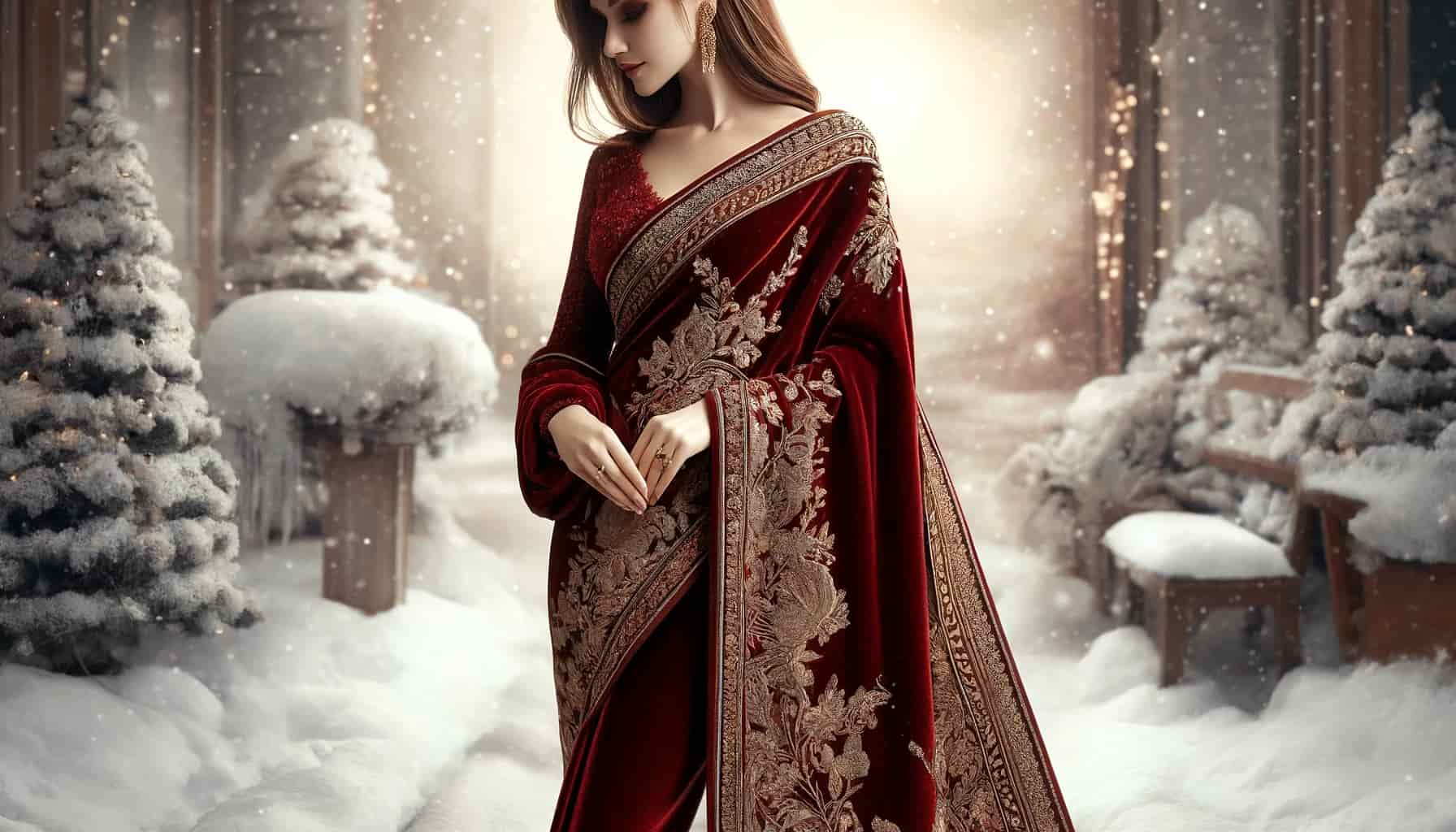
Top 10 Types of Saree Fabrics You Must Know
Sarees, one of the most elegant and timeless garments in Indian culture, are distinguished not just by their designs but significantly by their fabrics. The choice of fabric can affect the drape, comfort, and suitability of a saree for various occasions. This guide delves into the different types of saree materials, helping you choose the perfect one for every event.
1. Cotton Sarees
Fabric Features: Cotton is breathable, soft, and comfortable, making it ideal for the Indian climate.
Ideal for: Daily wear, office wear, and casual outings. Cotton sarees offer comfort and durability, making them perfect for day-to-day use.
Care Tips: Cotton sarees should be washed gently with mild detergents and preferably sun-dried to maintain their color and texture.
2. Silk Sarees
Sub-types: Kanjeevaram, Banarasi, Tussar, Mysore, and more.
Fabric Features: Silk is known for its sheen, luxurious feel, and vibrant colors. It drapes beautifully and is highly durable.
Ideal for: Weddings, festivals, and formal events. Silk sarees are a staple in bridal trousseaus across India.
Care Tips: Always dry clean silk sarees to preserve their richness and delicate embroidery.
3. Chiffon Sarees
Fabric Features: Chiffon is lightweight, slightly sheer, and has a slight stretch, which helps it drape well.
Ideal for: Evening parties, formal events, and casual wear. Chiffon sarees are perfect for creating elegant and flowing silhouettes.
Care Tips: Hand wash chiffon sarees and avoid wringing them to keep the fabric from getting damaged.
4. Georgette Sarees
Fabric Features: Georgette is similar to chiffon but with a crinkly texture. It is more durable and slightly heavier than chiffon.
Ideal for: Casual events, parties, and daily wear. Georgette sarees are versatile and can be used to create both casual and formal looks.
Care Tips: Georgette sarees should be washed gently and dried away from direct sunlight.
5. Velvet Sarees
Fabric Features: Velvet is luxurious and heavy, with a soft texture and deep, rich colors.
Ideal for: Winter weddings and grand evening events. Velvet sarees add a touch of royal elegance to any occasion.
Care Tips: Velvet should be dry cleaned and stored hung to avoid crushing the delicate pile.
6. Organza Sarees
Fabric Features: Organza is crisp and sheer, with a stiff texture that makes it suitable for sarees with a lot of embroidery.
Ideal for: High-end parties, bridal wear, and ceremonies. Organza sarees are often used for their sleek appearance and the structured shapes they can form.
Care Tips: Organza needs to be dry cleaned and stored with care to avoid snags and tears.
7. Crepe Sarees
Fabric Features: Crepe has a slightly crinkled texture and a graceful drape. It is lightweight and slightly elastic.
Ideal for: Formal events, office wear, and evening dinners. Crepe sarees are good for both traditional and modern styles.
Care Tips: Wash crepe sarees in cold water with a mild detergent. They should be air-dried.
8. Net Sarees
Fabric Features: Net is an open weave fabric that often includes elaborate embroidery.
Ideal for: Wedding receptions, parties, and festive occasions. Net sarees are popular for their modern and glamorous look.
Care Tips: Handle net sarees with care, especially when washing and drying, to avoid damage to the fabric and embroidery.
9. Linen Sarees
Fabric Features: Linen is lightweight, absorbent, and known for its natural luster and smooth texture.
Ideal for: Everyday wear, office wear, and semi-formal events. Linen sarees are comfortable and stylish, suitable for hot climates.
Care Tips: Linen sarees should be hand washed or machine washed in cold water to prevent shrinking and maintain their shape.
10. Jute Sarees
Fabric Features: Jute fabric is eco-friendly, durable, and has a distinct texture that adds a rustic charm.
Ideal for: Casual outings and eco-conscious events. Jute sarees are gaining popularity as a sustainable fashion choice.
Care Tips: Jute sarees require gentle washing and should be dried flat to maintain their texture and shape.
FAQ's
Q: What saree fabric is best for a formal event?
A: Silk and velvet are excellent choices for formal events due to their luxurious appearance and rich texture.
Q: Can I wear light fabrics like chiffon and georgette in winter?
A: Yes, but it is advisable to layer them with warm shawls or wear thermal wear underneath to stay warm.
Q: How to store sarees to extend their life?
A: Store sarees in a cool, dry place wrapped in muslin cloth. Avoid hanging silk and velvet sarees for long periods to prevent the fabric from stretching.
Conclusion
Understanding the different types of saree fabrics can significantly enhance your ability to choose the right saree for any occasion. From the lush drapes of silk to the casual elegance of cotton, each fabric offers unique benefits and styles. Choose wisely and care for your sarees properly to keep them looking beautiful for years to come.



Leave a comment
This site is protected by hCaptcha and the hCaptcha Privacy Policy and Terms of Service apply.